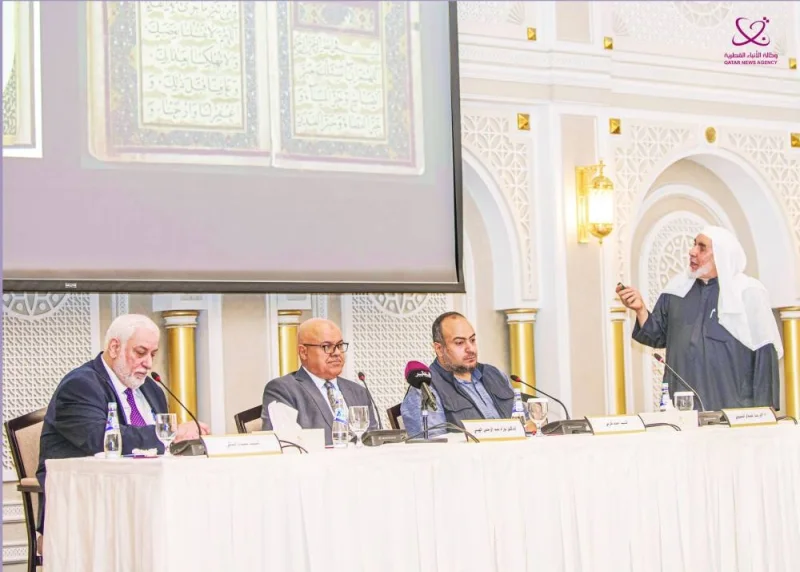A seminar organised by the Qatar International Arabic Calligraphy Competition "Al Raqim" at the Ministry of Endowments (Awqaf) and Islamic Affairs and Qatar Committee for Alliance of Civilisations at the Ministry of Foreign Affairs highlighted the impact of Arabic calligraphy in promoting inter-civilisational and cultural dialogue, focusing on artistic and aesthetic aspects that distinguish Arabic writing from other languages.
The seminar focused on the main topics of the history of Arabic calligraphy, the different civilisations it has passed through, its schools and types, the impact it has had on communication and interaction between Islamic civilisation and other civilisations, and its widespread presence as an aesthetic art form in architecture, such as in mosques, palaces, and beyond in the Islamic world and outside.
Speakers emphasised the connection between Arabic calligraphy, religious and cultural identity of Islamic nation.
They highlighted its aesthetic and artistic dimensions, which have influenced many nations and peoples that came into contact with Islamic civilisation.
Chairperson of the organising committee for Qatar International Arabic Calligraphy Competition "Al Raqim", Dr Saleh bin Ali al-Marri, stated that Arabic calligraphy represents a page of rich Islamic civilisation, opening a window for dialogue, interaction, and communication with various nations.
It has entered the languages and visual arts of Muslim societies, regardless of their different cultures.
Calligrapher of the Mushaf Qatar, Obaidah al-Banki, presented a lecture on development of Arabic calligraphy from first century of Hijra until the present day.
He explained how Muslims' commitment to writing and preserving the Qur’an contributed to the development of Arabic calligraphy, granting it aesthetic dimensions that made it a purely Islamic art and a reflection of the beauty of Islam and Islamic civilisation.
He also reviewed the schools of Arabic calligraphy from Hijaz to Kufa, Baghdad, Persia, and Turkiye, its various types, and different stages it went through.
Ahmad Fares, a calligrapher and expert in calligraphy and Islamic arts, discussed the Muslims' care for Arabic calligraphy and its use in spreading Islam.
He added that Arabic calligraphy was a spiritual nourishment for Muslims, shaping their aesthetic identity.
Just as Islam connected great ancient civilisations from China and India in the East to Andalusia in the West, Fares said, the appreciation of calligraphic beauty united the people of these civilisations.
Islamic preacher Dr Abdel Salam al-Basyouni addressed the spread of Arabic calligraphy in architecture, noting that its significance lies in its role in preserving the Qur’an, Sunnah, and Islamic sciences.
Other arts came to serve it, he said, highlighting its aesthetics.
The speakers concluded that Arabic calligraphy is a deep-rooted and authentic art that has accompanied Arab civilisation before Islam, with its true emergence coinciding with revelation of the Qur’an, which propelled both Arabic language and calligraphy to new horizons.
They commended Qatar's focus on Arabic calligraphy as part of its commitment to Arabic language and noted that "Al Raqim" competition, held as part of this seminar, is a testament to this dedication.
The Qatar International Arabic Calligraphy Competition "Al Raqim" is one of the largest competitions in its field, organised by Sheikh Abdulla Bin Zaid Al Mahmoud Islamic Cultural Centre and Museum of Islamic Art.
Its first edition took place in July last year, with prizes amounting to QR1mn.


